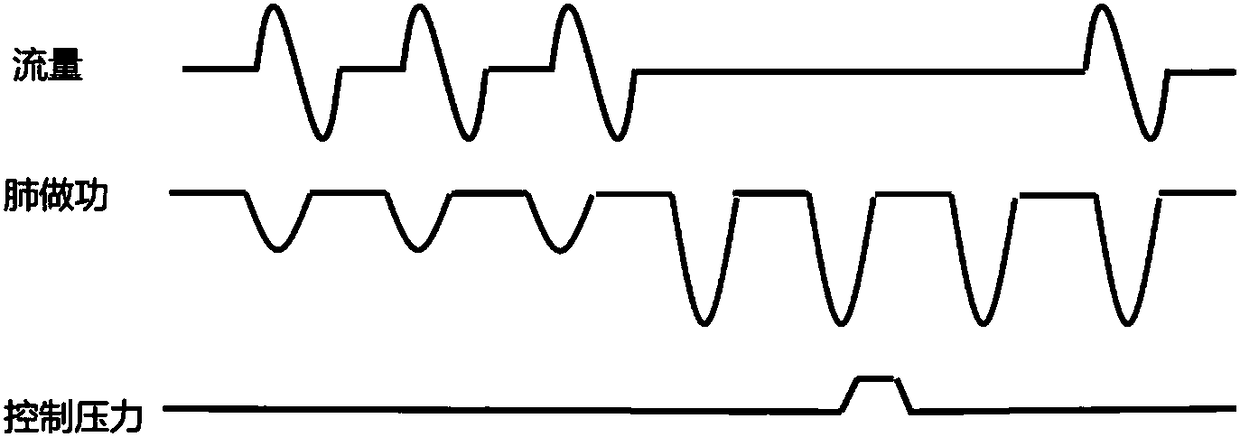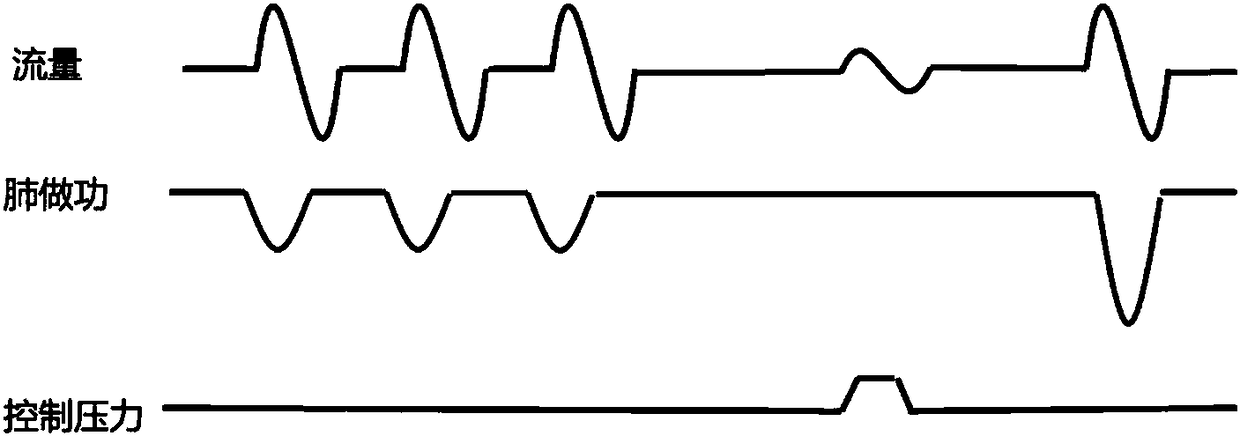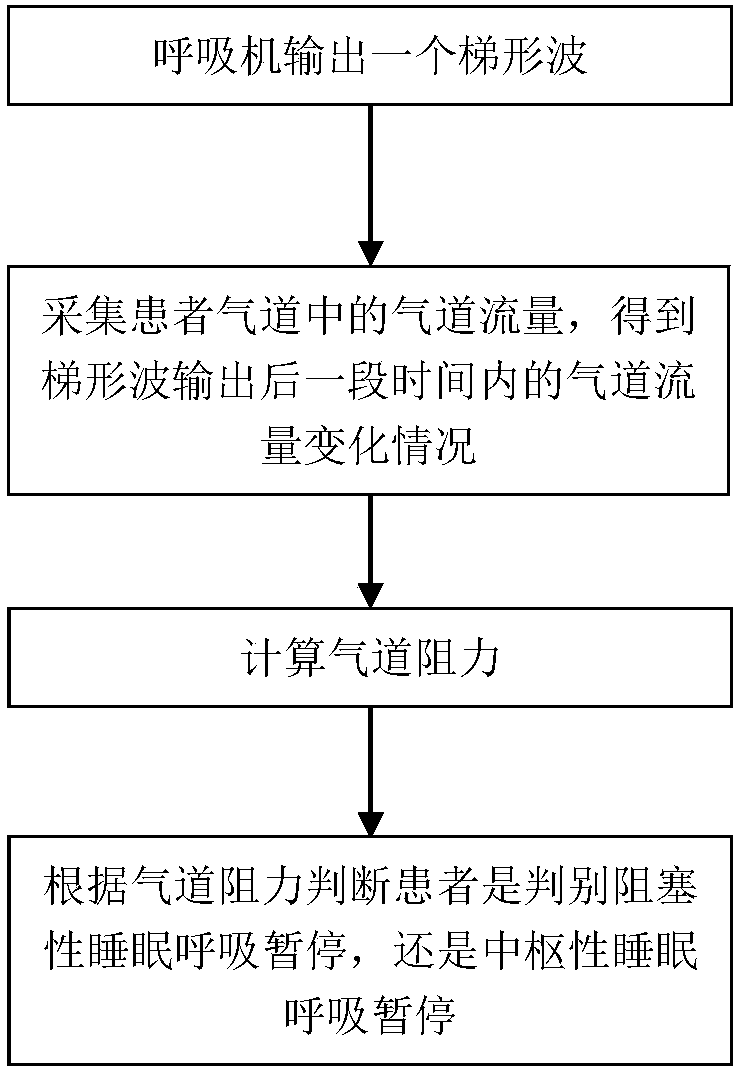Method for distinguishing obstructive sleep apnea and central sleep apnea
A sleep apnea and obstructive sleep apnea technology, applied in the field of ventilators, can solve the problems of automatic discrimination between central apnea and obstructive apnea, and achieve the effect of simple and accurate recognition
- Summary
- Abstract
- Description
- Claims
- Application Information
AI Technical Summary
Problems solved by technology
Method used
Image
Examples
Embodiment Construction
[0022] The present invention will be further described now in conjunction with accompanying drawing.
[0023] The method for distinguishing obstructive sleep apnea and central sleep apnea of the present invention is implemented in combination with a ventilator. The ventilator should include at least: a flow generator for providing pressurized gas; a mask for sealingly engaging the patient's face and delivering pressurized gas to the patient's airway in use; an air delivery tube for for connecting the flow generator with the mask; a sensor for measuring the respiratory flow and pressure signals near the flow generator; a controller for receiving the measured respiratory flow and pressure signals and controlling the flow generator operation and control of gas transmission. Most of the ventilators currently on the market can meet the above hardware requirements.
[0024] The applicant is in view of the pathological difference between obstructive sleep apnea and central sleep ...
PUM
 Login to View More
Login to View More Abstract
Description
Claims
Application Information
 Login to View More
Login to View More - R&D
- Intellectual Property
- Life Sciences
- Materials
- Tech Scout
- Unparalleled Data Quality
- Higher Quality Content
- 60% Fewer Hallucinations
Browse by: Latest US Patents, China's latest patents, Technical Efficacy Thesaurus, Application Domain, Technology Topic, Popular Technical Reports.
© 2025 PatSnap. All rights reserved.Legal|Privacy policy|Modern Slavery Act Transparency Statement|Sitemap|About US| Contact US: help@patsnap.com



